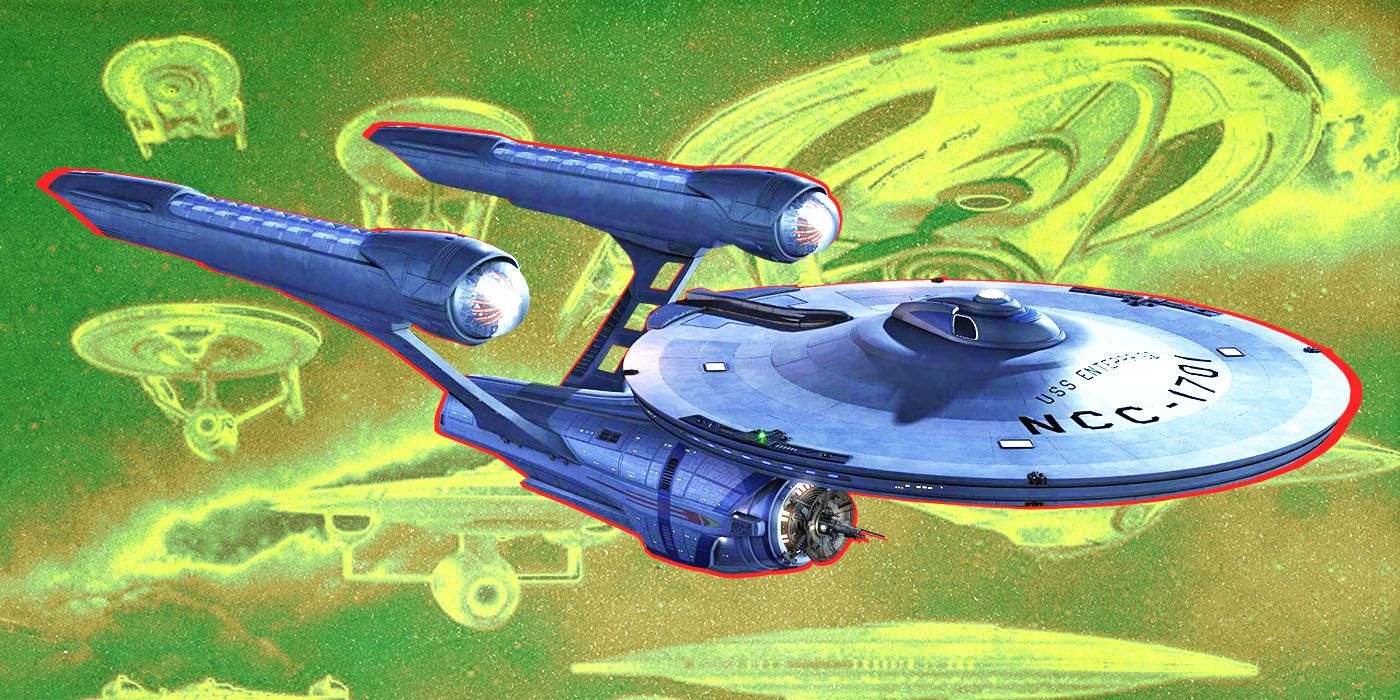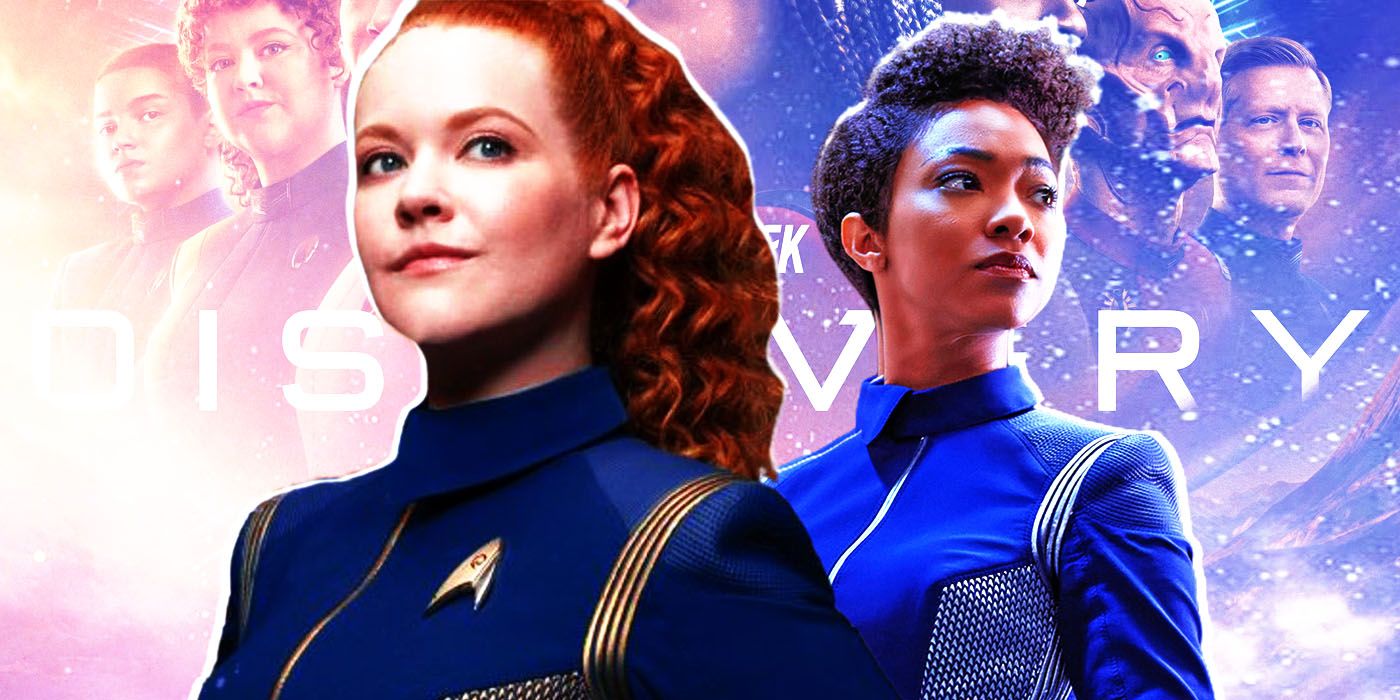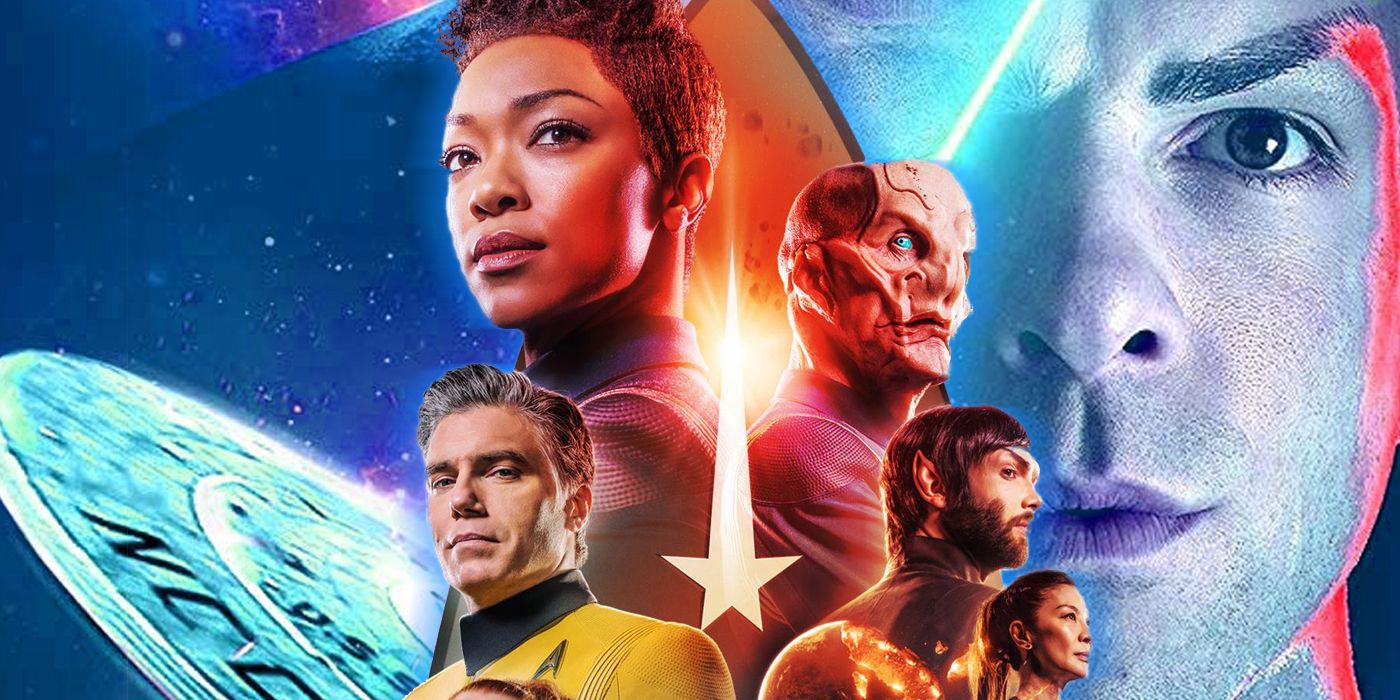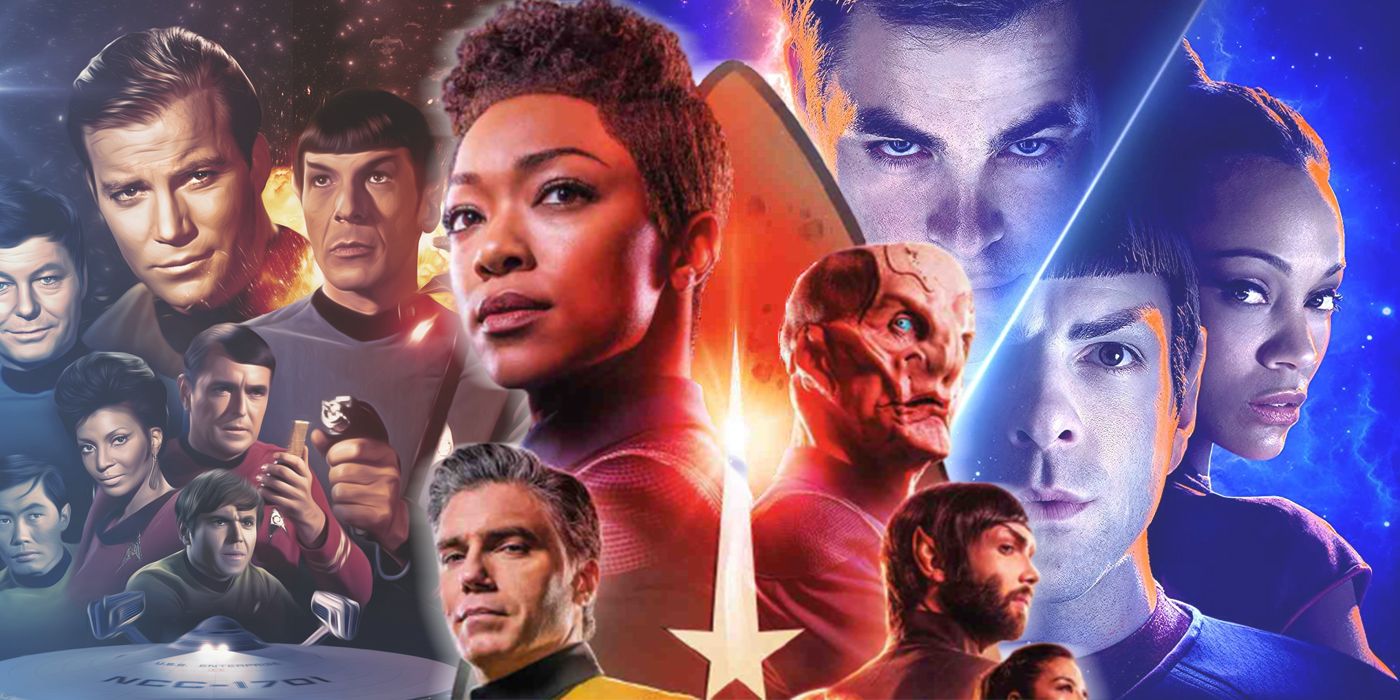Travel
Star Trek’s Time Travel Rules Aren’t Nearly as Confusing as They Seem

Summary
- Star Trek time travel operates with genuine logic, impacting the past and future consistently within the narrative framework.
- Major series and films heavily rely on time travel, introducing rules like the “slingshot” effect and parallel realities.
- Changes in the past affect the future of the Prime Timeline, except for the creation of the Kelvin Timeline as a parallel reality.
As a mainstay of science fiction for six decades, Star Trek is no stranger to time travel stories. On the surface, it may seem as if the rules of time travel are loose in Gene Roddenberry’s universe. The first chronological use of time travel comes at the end of Star Trek: The Original Series Season 1, Episode 6, “The Naked Time,” when the USS Enterprise is sent three days back in time. Since then, every major Star Trek series has featured time travel, with some even relying heavily on the convention.
Time travel also shows up in the films, from Star Trek IV: The Voyage Home to Star Trek: First Contact. The 2009 reboot Star Trek movie by J.J. Abrams also relies on time travel to create its brand-new universe. Star Trek also uses parallel realities, such as its famously evil Mirror Universe. While there are rules in its universe, the real-life way Star Trek time travel works is, essentially, narrative convenience. What the storytellers want to happen is what happens, but through these choices made by disparate storytellers, a framework emerges.
Time Travel in Star Trek: The Original Series Set the Tone
Star Trek Has Been Quietly Influencing One of the Most Popular Franchises of All Time
Star Trek is one of pop culture’s most enduring franchises, but Gene Roddenberry’s influence expanded beyond his universe to another popular brand.
“The Naked Time” and the Enterprise being flung into the past was meant to be the first part of a two-part story. The second part was “Tomorrow Is Yesterday,” eventually the 21st episode of the first season. In this story, the USS Enterprise is accidentally flung back to 1969. This episode developed the “slingshot” effect, in which the ship warps around the sun and uses that to break the “time barrier.” In this story, the Enterprise is able to successfully erase its presence in the past by undoing the changes they made. In Season 2, Episode 26, “Assignment: Earth,” The Enterprise is again in the past on what’s supposed to be a “routine” observation mission. Instead, they help Gary Seven — a mysterious human called a Watcher” — prevent a nuclear detonation.
In that episode, Spock discovers the Enterprise was always supposed to be a part of the events that day. This is a closed time-loop in which the presence of time travelers was always part of what happened. However, in the famous episode “City on the Edge of Forever,” a crazed Doctor McCoy accidentally goes back in time through the “Guardian of Forever” gate and changes history. The USS Enterprise disappeared, but the away team on the planet did not. This was the first time that changes in the past were immediately reflected in the timeline, which is the de facto way time travel manifests in Star Trek. Similarly, in Star Trek: The Animated Series, the Guardian of Forever is used to correct a mistake that erased Spock from history.
In “City on the Edge of Forever,” proximity to the Guardian prevented the crew from being affected by the changes. Yet, in “Yesteryear,” the crew by the Guardian were not immune, not recognizing Spock when he emerged. Lastly, in Star Trek IV the crew changes the past, but its effects are left vague. Scotty gives a random manufacturer the formula for transparent aluminum, while Chekov leaves behind his communicator and phaser when captured by the US military. How these changes affected the future are not known, but it’s presumed that they would have been both instantaneous and unnoticeable upon the Enterprise’s return to their present.
How The Next Generation Era Solidified Star Trek Time Travel Rules

One of Star Trek’s Best New Characters Reclaimed a Problematic Trope
A Star Trek fan invented the “Mary Sue,” and if any Discovery character fits the original it’s not Michael Burnham but Sylvia Tilly. And it’s great.
There were a number of episodes in the second wave of Star Trek that dealt with time travel, including its consequences on the future. In a Star Trek: Voyager two-parter, Ed Begley, Jr. played an important character who was, essentially, responsible for the 1980s and 1990s computer age the Star Trek: The Originl Series storytellers didn’t see coming. In Star Trek: Deep Space Nine‘s “Past Tense,” Captain Sisko has to step in for historical figure Gabriel Bell in the “Bell Riots,” an important historical event. Also, Deep Space Nine revealed that Quark, Nog and Rom were the “Rosewell aliens” thanks to a time travel snafu. However, one episode further solidified how changes to the timeline worked.
In Star Trek: The Next Generation‘s third season episode, “Yesterday’s Enterprise,” the USS Enterprise-C was displaced from its time into the 24th Century. The moment it arrived there, the timeline changed and none of the Enterprise-D crew was the wiser. Only Guinan was subtly made aware of these changes due to her El Aurian ancestry. When the Enterprise C went back into the temporal rift, that reality snapped back not just to normal but the moment it first emerged. This was despite the fact that days passed in the alternate present the ship’s arrival created. This matches how the temporal changes in the sequel series worked as well. Sometimes other characters were exempt from the changes, and while there were sci-fi reasons given, it was, again, narrative convenience.
In Star Trek: First Contact, the Borg successfully altered the past when it sent a sphere back to 2063. The USS Enterprise-E was immune from the timeline changes because of its proximity to the temporal singularity that eventually allowed them to follow. Since the version of Zefram Cochrane that appeared in The Original Series was ignorant of the Federation, it’s safe to assume the presence of The Next Generation‘s characters changed that past from what it once was. When they returned to their present, presumably, any permanent changes to the present were, again, unnoticeable.
Star Trek: Enterprise and the Kelvin Timeline Changed Time Travel Rules Further

Star Trek: Discovery Fixed One Big Mistake the Kelvin Timelines Movies Made
Star Trek fans are finicky about new entries in the saga, but Paramount+’s Discovery fixed a major mistake made in the Kelvin Timeline movie series.
The idea of a temporal war was introduced in Star Trek: Enterprise, again suggesting the version of events viewers saw was not the history the characters in the past series knew. From the war with the Xindi in Season 3 to the various temporal incursions in the earlier seasons, the NX-01 Enterprise experienced a different history than it should’ve. This suggests that every time travel adventure in Star Trek changed the past, save perhaps for the events in “Assignment: Earth.” However, that episode is an outlier because it was conceived as a backdoor pilot for a spinoff starring Gary Seven. At some point, according to both Star Trek: Discovery and Star Trek: Strange New Worlds, the Temporal War went from “cold” to “hot,” resulting in even more significant changes.
Still, in almost all cases, changing something in the past affected the future of the Prime Timeline. There is one notable exception, which also exists for narrative convenience. When Ambassador Spock and the Narada traveled into the past after the destruction of Romulus, it created an alternate timeline that became a parallel reality running concurrent with the Prime Timeline. Unlike other time travel events that changed Star Trek canon, the Kelvin Timeline continued forward without undoing the events in the Prime Timeline. Star Trek: Picard Season 1 proved this by confirming the destruction of Romulus. And, when those characters time traveled in Season 2, the changes in the past were again reflected in the Prime Timeline’s future rather than creating a branch reality.
For those looking for a sci-fi reason for this, one could say that the mysterious “Red Matter” Spock used had something to do with it. However, the Kelvin Timeline isn’t necessarily the only parallel reality created by time-travel. In Star Trek: Discovery, the Guardian of Forever implied to Philippa Georgiou that there was a period in the Mirror Universe’s past where it was the same timeline as the one fans know. Though, Enterprise showed that divergence happened, at least, as far back as Vulcan First Contact. Still, save for it and the Kelvin Timeline, Star Trek‘s rules of time travel suggest changes in the past affect the future of the Prime Timeline.
There Are Still Unanswered Mysteries About How Time Travel Works in Star Trek

The New Star Trek Series Could Erase the Kelvin Timeline, but Shouldn’t
Since the Kelvin Timeline movies debuted, some Star Trek fans want them erased from canon, and the Paramount+ series could do it. But it shouldn’t.
When it comes to the real-world story reasons for creating an alternate timeline versus a parallel reality, it’s all down to narrative needs. The Kelvin Timeline needed a future unencumbered by existing canon, thus it existed without changing the Prime Timeline. However, most of the time travel incursions in the Star Trek universe don’t work that way. Yet, events change for other, inexplicable reasons such as the birth and rise of Khan Noonien Singh. In “Space Seed,” the The Original Series Season 1 episode that introduced the character, his reign of terror happened in the 1990s. Yet, Strange New Worlds fixed that in Season 2.
Khan’s descendent, La’an Noonien Singh, was recruited by a Temporal Agent to fix an attack in the past. When he passed his Time Gizmo to her, the timeline changed around her, including erasing the Temporal Agent’s body. While in the past, she encountered a Romulan temporal soldier sent back to the 1990s to kill Khan. Without him, Starfleet and the Federation would never form. Yet, when she got there, she found no evidence of Khan’s existence. Eventually, she discovered him as a child in the mid-21st Century. She implied to La’an that certain “canon events” will happen regardless. Perhaps because of the changes made to the time in Voyager, Khan’s creation didn’t happen until later.
While these aren’t the clearest rules, time travel can explain many things, including Strange New Worlds‘ advanced technology. These changes alter the look and capabilities of Star Trek‘s future, but the “big” things still happen. Christopher Pike captains the Enterprise and is debilitated in an accident. James T. Kirk replaces him, preventing a Romulan war. This can also mean that time travel events that don’t happen on screen can also change the timeline in ways the characters (and the audience) would never realize. In fact, all these various stories told by different generations of storytellers over decades fit together even this neatly is a kind of miracle in itself.
Star Trek’s series and Kelvin Timeline films are available to stream on Paramount+, while the first 10 films stream on Max. All are available to own on DVD, Blu-ray and digital.

Star Trek
The Star Trek universe encompasses multiple series, each offering a unique lens through which to experience the wonders and perils of space travel. Join Captain Kirk and his crew on the Original Series’ voyages of discovery, encounter the utopian vision of the Federation in The Next Generation, or delve into the darker corners of galactic politics in Deep Space Nine. No matter your preference, there’s a Star Trek adventure waiting to ignite your imagination.
- Created by
- Gene Roddenberry
- First Film
- Star Trek: The Motion Picture
- Latest Film
- Star Trek: Nemesis
- Cast
- William Shatner , Leonard Nimoy , Deforest Kelley , James Doohan , Nichelle Nichols , Patrick Stewart , Jonathan Frakes , Avery Brooks , Kate Mulgrew , Scott Bakula
- TV Show(s)
- Star trek , Star Trek: Picard , Star Trek Voyager , Star Trek: Prodigy , Star Trek: Animated , Star Trek: Discovery , Star Trek Lower Decks , Star Trek: Enterprise , Star Trek: Deep Space Nine , Star Trek: Strange New Worlds , Star Trek: Lower Decks









